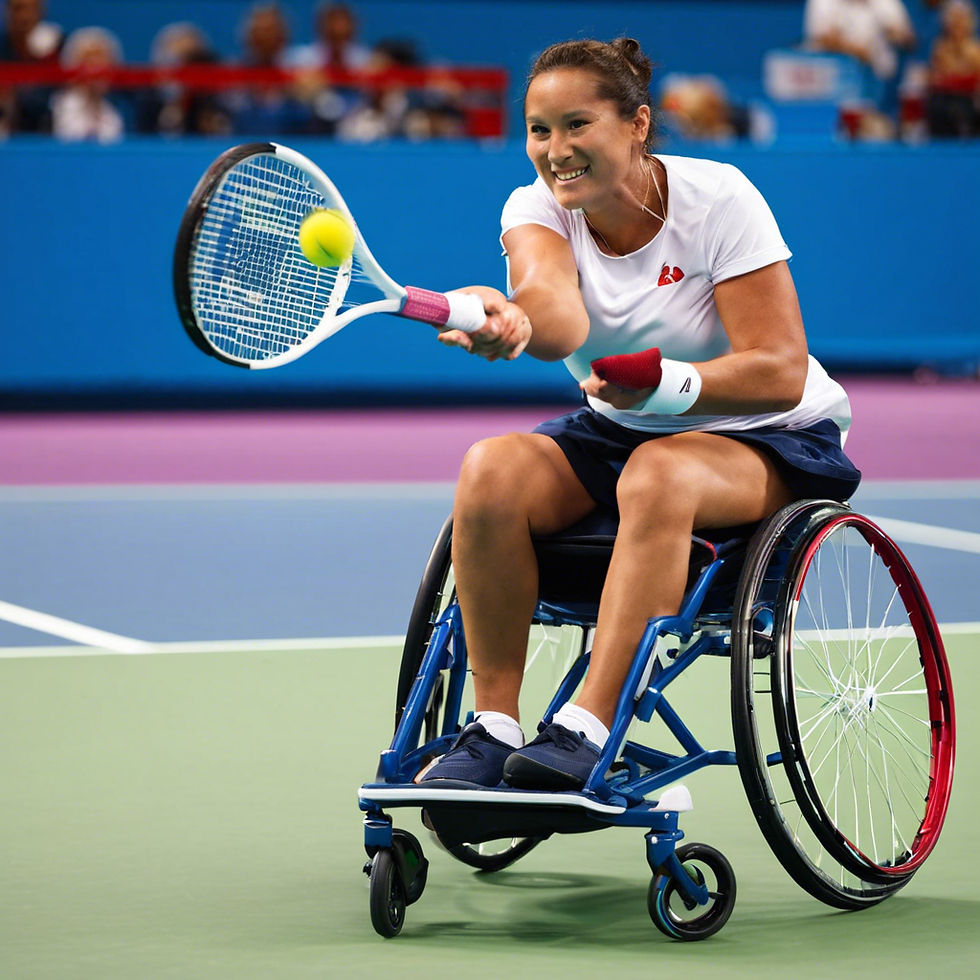Wheelchair Tennis in the Paralympics: A Celebration of Skill and Resilience
- Uttarakhandnews Network
- Sep 4, 2024
- 3 min read
Wheelchair Tennis in the Paralympics: A Celebration of Skill and Resilience
Wheelchair tennis, a dynamic and inspiring sport, has been a staple of the Paralympic Games since its debut in 1988. Known for its incredible athleticism, strategic depth, and the sheer willpower of its players, wheelchair tennis continues to captivate audiences and showcase the extraordinary capabilities of athletes with disabilities.
Origins and Evolution
Wheelchair tennis traces its roots to the 1970s when Brad Parks, an American tennis player and paraplegic, adapted the game to fit his needs. Parks’s innovations, including the allowance of two bounces before the ball must be returned, laid the groundwork for the sport as we know it today. His pioneering spirit not only provided a platform for disabled athletes but also helped to popularize wheelchair tennis worldwide.
The sport was formally introduced to the Paralympic Games in Seoul in 1988. Since then, it has grown significantly in both popularity and competitive level, reflecting the increasing recognition and support for athletes with disabilities.
The Game and Its Rules
Wheelchair tennis follows many of the same rules as able-bodied tennis, with some key modifications to accommodate players who use wheelchairs. One of the primary adaptations is the rule allowing two bounces before the ball must be returned, with the first bounce occurring inside the court's boundaries and the second bounce being permitted outside the court's lines. This rule is designed to level the playing field and provide players with adequate time to maneuver their wheelchairs and execute shots.
Players are allowed to use their wheelchairs to hit the ball, but they must maintain a continuous motion while doing so. This requirement demands exceptional agility, coordination, and strategy, as athletes must maneuver their wheelchairs while positioning themselves to make precise and powerful shots.
Notable Athletes and Rivalries
Wheelchair tennis has produced a number of remarkable athletes who have left an indelible mark on the sport. One such athlete is Shingo Kunieda of Japan, widely regarded as one of the greatest wheelchair tennis players of all time. Kunieda has amassed numerous Grand Slam titles and Paralympic medals, demonstrating exceptional skill and consistency throughout his career.
Another prominent figure is Esther Vergeer of the Netherlands, who dominated women's wheelchair tennis for over a decade. Vergeer's incredible winning streak and dominance on the court, including multiple Paralympic gold medals, have made her a trailblazer in the sport and an inspiration to many.
The Paralympic Experience
At the Paralympic Games, wheelchair tennis is played on the same courts as able-bodied tennis, providing a high level of visibility and a platform for athletes to showcase their talents on a global stage. The competition is fierce, with players from around the world coming together to compete at the highest level. The matches are not only a test of physical endurance and skill but also a celebration of the athletes' resilience and determination.
The sport's presence at the Paralympics has also helped to challenge and change perceptions of disability, emphasizing that athletes with disabilities can compete at the highest levels of sport and achieve remarkable feats. The visibility and media coverage of wheelchair tennis during the Paralympic Games contribute to raising awareness and fostering a more inclusive and equitable sporting environment.

Looking Ahead
As the Paralympic Games continue to evolve, wheelchair tennis will undoubtedly remain a key highlight of the event. The sport's growth, both in terms of talent and popularity, reflects broader societal changes towards greater inclusivity and recognition of the abilities of athletes with disabilities.
Looking to the future, wheelchair tennis will likely see continued advancements in technology, training methods, and opportunities for athletes. The ongoing support from organizations, fans, and the media will be crucial in ensuring that wheelchair tennis continues to thrive and inspire new generations of players.
In summary, wheelchair tennis at the Paralympics represents more than just a sport—it is a powerful testament to human strength, adaptability, and the unyielding pursuit of excellence. As spectators, we are privileged to witness the incredible achievements of these athletes and to celebrate the spirit of perseverance that defines wheelchair tennis.






